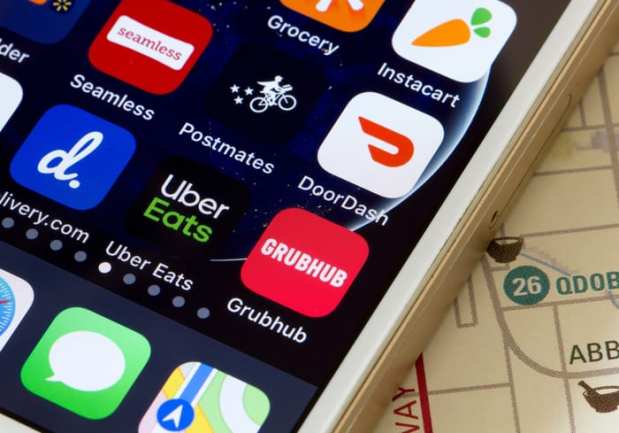Uber’s Bid For Grubhub Triggers Delivery Fee Fears

The possible merger between Uber and Grubhub is causing a wave of worry over delivery fees at a time when some local officials are considering instituting caps, as the New York City Council did on Wednesday (May 13).
The two food delivery giants are said to be discussing a deal that would result in the biggest restaurant food delivery operation nationwide. Uber Eats has over 100,000 restaurants on its platform, amounting to roughly 20 percent of the market. Grubhub, with about 300,000 eateries, has about 30 percent of the market.
The issue on the minds of many revolves around delivery fees, which range from 10 percent to as high as 40 percent. With already-thin profit margins and the pandemic making survival a daily struggle, some restaurants have cried foul. In response, the New York Council voted to cap delivery fees at 15 percent until 30 days after the state of emergency is lifted.
Similar caps were also instituted in San Francisco, Seattle, Washington, D.C., and Jersey City, according to a CNBC report. In Chicago, Grubhub’s home base, the city enacted new rules this week that requires transparency from delivery companies, mandating that customers get an itemized breakdown of every transaction, including what commissions and service fees are charged to the restaurants, Eater reported. The city is holding a meeting to discuss delivery fees next week.
If the Uber-Grubhub deal closes, it will likely get attention from Sen. Elizabeth Warren (D-Massachusetts) and Rep. Alexandria Ocasio-Cortez (D-New York), who proposed the Pandemic Anti-Monopoly Act. The bill calls for suspending mergers and acquisitions until the Federal Trade Commission (FTC) deems that businesses and consumers are no longer in severe financial distress.
Even before the pandemic hit, rumors were circulating that Grubhub was looking for a buyer. DoorDash, Uber Eats and Postmates were all considered to be leading contenders to buy the company.
A recent PYMNTS consumer survey showed that the share of consumers using digital dining options is continuing to rise. But the massive growth observed in the early weeks of March is showing signs of leveling out. Without additional exponential growth, it seems likely the space won’t be able to support a half-dozen or so variations of the same offering, and consolidation is in the cards.